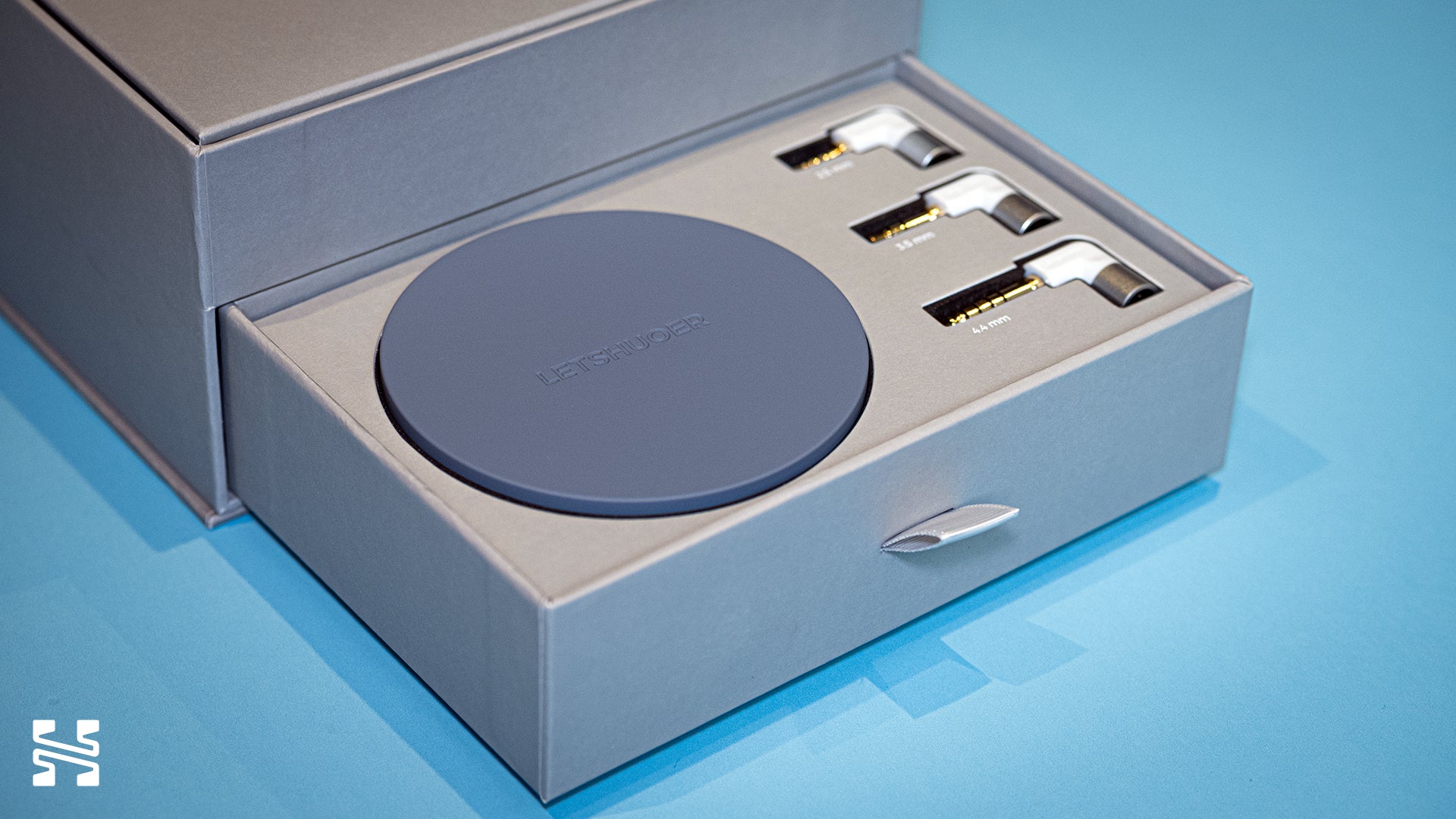Letshuoer S15 Review: Not At This Price
The Letshuoer S15 is the successor to the wildly popular Letshuoer S12 planar IEM. At $330, the S15 has two tricks up its sleeve: a 3rd generation planar drive and Letshuoer's R-Sonic filter technology. But will it be worth triple the MSRP? Fc-Construct takes a look.

Introduction
Though the 7Hz Timeless ushered in the planar revolution in 2021, it’s arguably the $110 Letshuoer S12 that became the most popular choice in that class of in-ear monitors (IEMs). It struck a nice balance between solid tuning, strong technical performance, and a great price. So much so that Letshuoer created three versions of the S12: the original S12, the S12 Pro, and the Zeos collab Z12 (along with its black and gold colorways).
But the S12 is not the topic of today’s review. Instead, we’ll be looking at its successor - the Letshuoer S15. Marketed as a “third generation planar” with an “R-Sonic passive filtering module”, they’ve tripled the asking price to $330. Let’s see if the S15 brings enough to the table or if this class of planar IEMs have hit their realistic limit.
Source(s) Used: Ferrum ERCO Balanced DAC & Headphone Amp and Apple USB-C dongle
The Letshuoer S15 was sent to me by Letshuoer for this review.
What we like
- Noticeably dynamic bass for a planar
- Comfortable fit with no pressure build-up
- Warm tuning that’s good for casual listening
What we don’t like
- Stuffy sounding vocals and muted upper mids
- Weak price/performance ratio
- Treble is perfunctory
What’s in the Box
I appreciate the effort that Letshuoer put into the S15’s packaging. It comes in a nice little grey box with slide-out compartments to display the accessories. Altogether, you get:
- A set of silicone S/M/L balanced eartips - these are fairly generic IEM tips.
- A set of silicone S/M/L vocal eartips - these are blue and have a wider and shorter nozzle. They’re quite comfortable and this is what I’m primarily using for this review.
- A 2-pin braided cable with an interchangeable 2.5/3.5/4.4 mm L-shaped jack. It’s a pretty decent cable, though a bit bulky for me. The jack is friction fit with a white, matte coating. I’m pleased to see more IEMs with modular cables as stock.
- The S15 itself. It has a light blue matte shell, the first I’ve seen in an IEM. I like it. The nozzle is on the larger size at around 6 mm which isn’t great. That said, I did find the S15 to be ergonomically shaped and I didn’t have too many issues with comfort.

I’ll make a quick mention here that while the S15 is using a “third generation” 14.8 mm planar driver, it’s not super clear what the difference is with the original 14.8 mm driver the S12 used. Nor does it matter, frankly. As long as it sounds good, I’m not one to care too much about how it gets there.
However, the other neat bit of technology Letshuoer is boasting is the R-Sonic passive filtering module that’s supposed to help alleviate ear canal pressure and listening fatigue in response to increased volumes. They have an explanation here if you’re interested. While I’m not sure if it’s actually the R-Sonic tech at work, I will say I’ve had zero pressure build-up in my ears with the S15. The level of comfort here is akin to 64 Audio’s APEX technology. Very commendable.
Sound and Frequency Response
Two things stuck out to me the first time I heard the S15. The first is that it’s a warm IEM - the upper mids have a dip around the presence region of around 3 - 4 kHz and female vocals have a bit of a stuffy sound. The second is that the bass is surprisingly fun without being overemphasized.
Here is the calibrated frequency response graph of the S15, taken on a clone IEC-711 coupler. A perfectly flat line at 0 equals the diffuse field head-related transfer function (DF HRTF), the anatomical baseline compensation for headphones/IEMs. The wide grey bands are preference bounds that represent listening research that suggests the limits of how much deviation/tonal color a headphone could have that people still found acceptable without it starting to be perceived as imbalanced.
And here is the raw measurement if you’re more familiar with this representation. As a reminder, measurements in the upper treble above the 8 kHz resonance artifact are inaccurate.
Bass
There’s a notable amount of bass on the S15, and we can see that in the measurements as it extends past the preference bounds in the midbass. But to my ear, the S15 isn’t actually that bassy. At least, not to the point where I’d consider it a bass-focused IEM. Just one with low-end presence and a good bit of fun. Bass guitars are particularly satisfying.
In general, the bass of the S15 has a plodding quality. It primarily leads with the midbass with the subbass lagging behind. As such, notes have decent weight as they land but not a tight punch nor heavy impact. Despite my criticisms, the S15’s bass is possibly the most dynamic planar IEM bass I’ve heard. Somehow, it has quite a good handle on macrodynamics and notes land with a good thump. It doesn’t have the hard transients of a BA and leans more on the side of a lengthier decay like a DD. While it can be somewhat one-noted for drums, the S15’s bass is well-controlled and doesn’t struggle in faster tracks.

Mids
The midrange of the S15 is unlike many of the planar IEMs I’ve tried. Instead of abundant upper mids around 2.5 kHz, the S15’s pinna gain rises sharply at 1 kHz and rapidly peaks a little past 1.5 kHz. Combined with the lower mids elevation, it can make the S15 sound somewhat stuffy, especially for female vocalists. While they do have presence, it’s the clarity, and more importantly, the emotion, that’s muted. When singers start to belt and unleash the full range of their voice, it gets muted on the S15. It plays along initially with the crescendo but it never reaches the peak. Like water that gets heated but doesn’t boil. Familiar songs just lack the emotional highs I’m expecting. To a lesser extent, this mutedness extends to instruments like electric guitars and violins that often take the spotlight.
Once again however, I find myself enjoying the S15’s sound despite its flaws. Its warmer, recessed presentation never gets fatiguing. There isn’t a hint of harshness to be found. And while I call it stuffy due to the awkwardness of its pinna gain, you could argue for it as being thick and lush. Importantly, the S15 doesn’t get muddy because it carries just enough upper mids energy into the lower treble. As such, the timbre of instruments don’t come off as being overly bodied despite the S15’s tuning. Acoustic guitars aren’t boxy, for example.

Treble
The treble of the S15 is unremarkable. Using the “Vocal” tips, there seems to be a small peak in the upper treble that might occasionally introduce a slight sibilance to the vocals. But otherwise, it takes a backseat to the rest of the sound, doing the minimum to avoid sounding dark. Needless to say, there’s little air. Transients aren’t too sharp and decay falls off fairly quickly. Unfortunately, the S15’s treble can become lost and incoherent. In some tracks, the hats and cymbals feel like they’re there to fill space rather than as notes with a clear purpose.
This is a departure from the S12 which was well-known for its rather aggressive treble presence. Personally, I found the S12’s mid-treble to be a bit much so I appreciate toning it down here (similarly to the S12 Pro). In better mixed tracks where high notes are less chaotic, the S15 does a good job of presenting them plainly without any embellishments.

Presentation
The technical performance of the S15 is middling. Resolution and layering are adequate. Except for the bass, which benefits from simply having more volume, it mostly presents surface level detail retrieval complemented with a touch of nuance and separation every now and then. Soundstage and imaging are fairly average, only enhanced by the R-Sonic system’s pressure relief system to sound a little more open. Where the S15 is most comfortably ahead of the other planars is in the increased macrodynamics of its bass. For these reasons, combined with its relaxed tuning and low in-ear pressure, the S15 is an IEM that’s best suited for casual listening.

Should You Buy It?
Not at MSRP. The Letshuoer S15 is not a bad IEM. To be honest, when I saw the marketing claims of being a 3rd generation planar successor to the S12, I thought Letshuoer was just trying to continue milking the planar hype. I didn’t have high hopes as I think the 14.2/14.8 mm driver used in these planar IEMs is pretty much tapped out. But to my surprise, I did have some fun with them while listening to some albums over Christmas. Even as I write this review, I’m enjoying the S15 as it happily shuffles through my library.
The problem is its price. It’s a hard sell at $330. While the S15 is a departure from the other planar IEMs and does have a different tuning from the Harman-adjacent IEMs that are currently flooding the market, its performance is ultimately middling. Though it offers an aesthetically pleasing package, a comfortable fit, and a commendable dynamic bass experience, the price-to-performance ratio is lacking. It would be a much more compelling option at $100 - $150. But then, the S15 will have to contend with the popularity of its livelier predecessor.
My recommendation if you want a planar IEM that’s on the warmer and relaxed side is to grab a Tin HiFi P1 Max “Big Panda” on sale for around $70 - $100. It’s more akin to the original planar IEMs in its presentation and technical performance but with a more subdued and forgiving tuning like the S15. But if Letshuoer ever gives a deep discount on the S15, I think it’s worth a shot.
